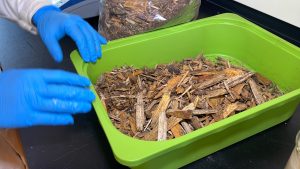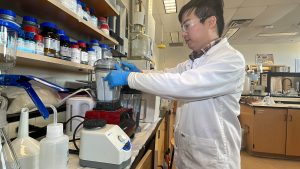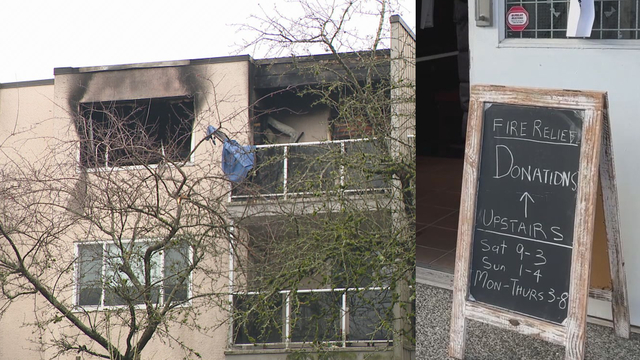UBC researchers develop new biodegradable packing foam to combat pollution

Posted November 9, 2022 10:33 pm.
Last Updated November 9, 2022 10:44 pm.
Researches at the University of British Columbia (UBC), in partnership with the Wet’suwet’en First Nation, have developed a new kind of biodegradable packaging foam.
The team hopes their new ‘biofoam’ will help address the world’s plastic pollution concerns.
“Styrofoam waste fills up to 30 per cent of global landfills and can take more than 500 years to break down,” explains UBC’s Feng Jiang, an assistant professor and the Canada Research Chair in sustainable functional biomaterials.
But eventually, he says “we want the planet to be free of the petroleum-based, non-biodegradable foam.”

Materials like woods chips are used to create biofoam, a new foam created by the University of British Columbia researchers that will help reduce forest waste. (Angela Bower/CityNews)
“Our biofoam breaks down in the soil in a couple of weeks, requires little heat and few chemicals to make, and can be used as substitute for packaging foams, packing peanuts and even thermal insulation boards,” Jiang explained.
Related articles;
-
Immigrants from Asia are majority of Canadian newcomers: study
-
Climate change costing Canada billions in lost GDP: parliamentary budget officer
In additon to cutting down on pollution, the team is also working at cutting down on environmental waste, like using lumber damaged by forest fires to make the foam.
“Less than 50 per cent of harvested trees are used in the wood industries, the rest is left behind in the forest, serving as potential fuel for devastating wildfires,” Jiang explained.
In partnership with the university, the Wet’suwet’en First Nation is providing raw materials from the forest located near Burns Lake.
Reg Ogen, the president and CEO at Yinka Dene Economic Development for the Wet’suwet’en Nation says the material is the waste from logging in the forest, something that usually gets burned — but the partnership has helped change that.
“What we want to do is clean up what was left, and make sure that we use every bit of the stuff up, not just burn it,” Ogen says.

Yeling Zhu, a postdoctoral fellow at the University of British Columbia makes a sample of biofoam. (Angela Bower/CityNews)
He also adds the partnership can help create a space for reconciliation.
“I really think it opens the doors for other Indigenous groups around B.C. and Canada to start reaching out to Universities, and to find ways to better our community, and our province, and Canada as a whole,” he said.
“It’s our part to take care of Mother Earth, and we’ve got to make sure the fish highways are open, that they can continue to come home, and make sure that the moose, and the four-legged’s are still roaming freely,” he added.
Jaing explains the partnership has been a beneficial way of reducing waste and working together.
“This project highlights the benefits of forging meaningful partnerships by first identifying the problems, reducing waste from each tree harvested, mitigating the impacts of wildfires, and ensuring participation in the forest sector by First Nations, before moving towards a solution with First Nations as a true partner,” Jiang said.
He adds the cost of making the biofoam is less expensive than making products like Styrofoam, and could be very profitable.
The team plans on moving into the manufacturing and production stage next year.







